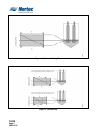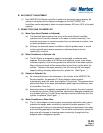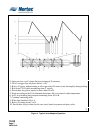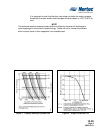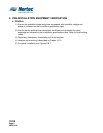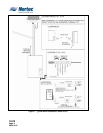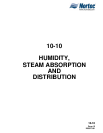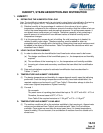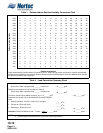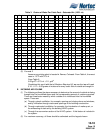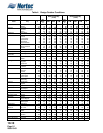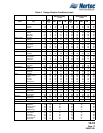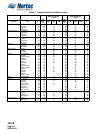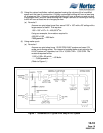
10-10
Page 13
2008-10-01
HUMIDITY, STEAM ABSORPTION AND DISTRIBUTION
1. HUMIDITY
A. ESTIMATING THE HUMIDIFICATION LOAD
Note: The humidification load can easily be calculated by using Nortec’s Humidification Engineering
and Load-sizing Program (HELP). The softward can be downloaded at www.humidity.com
(1) Relative humidity is the percentage of moisture in the volume of air at a given
temperature, compared to the maximum amount of moisture that the volume of air can
hold at the same temperature and atmospheric pressure. As air becomes warmer, it
can absorb more moisture per unit volume. Therefore a quantity of air containing a
specific amount of moisture will have different values of relative humidity as the
temperature changes.
(2) It is this process that causes dry air in building. As cold incoming air is heated, its
relative humidity value drops. Therefore moisture must be added to attain an
acceptable level of humidity within the building. Determining how much moisture must
be added is the object of this brochure. Table 2 simplifies the calculations which are
described here in detail.
B. LOAD CALCULATION SUMMARY
(1) In order to determine the humidification load three basic values need to be known:
(a) The design conditions of the humidified space, i.e., the temperature and humidity
required.
(b) The conditions of the incoming air, i.e., the temperature and humidity available.
(c) Incoming air volume and secondary conditions that can affect the humidification
load.
(2) Data and calculations required to estimate humidification load are described in
Tables 1, 2 and 3.
C. TEMPERATURE AND HUMIDITY REQUIRED
(1) The design temperature and humidity of a space depends mostly upon the job being
performed. Once the design temperature and humidity have been established, the
required moisture can be found in gr/ft
3
from Table 3. Remember always to take the
worst case (highest temperature, highest humidity).
(2) Formula 1
For example:
The press room of a printing plant should be kept at 76 - 80
°F with 43% - 47% rh
Therefore, the worst case is 80
°F, 47% rh.
From Table 3 the required moisture is 11.04 gr/ft
3
x 47% = 5.19 gr/ft
3
D. TEMPERATURE AND HUMIDITY AVAILABLE
(1) The outdoor conditions tell us the moisture available in the incoming air. Approximate
values can be obtained from Table 4 and combined with Table 3 to find moisture
available. Once again we must take the worst case (here, it is lowest temperature,
lowest humidity). As can be seen, the contribution of moisture from the outside air is
almost zero.



